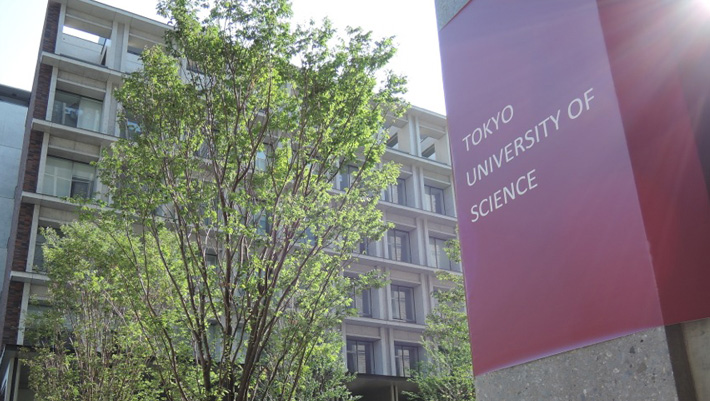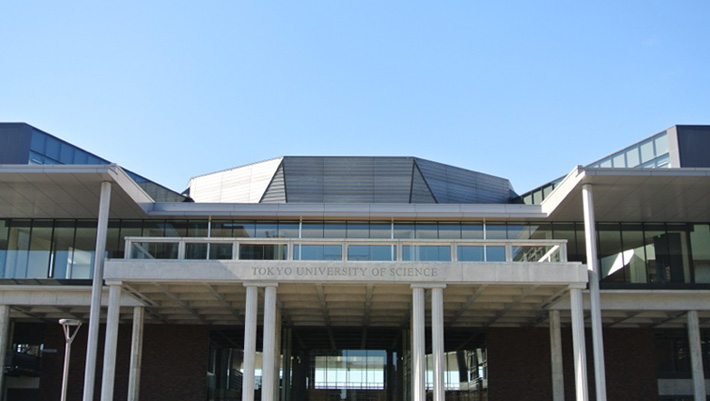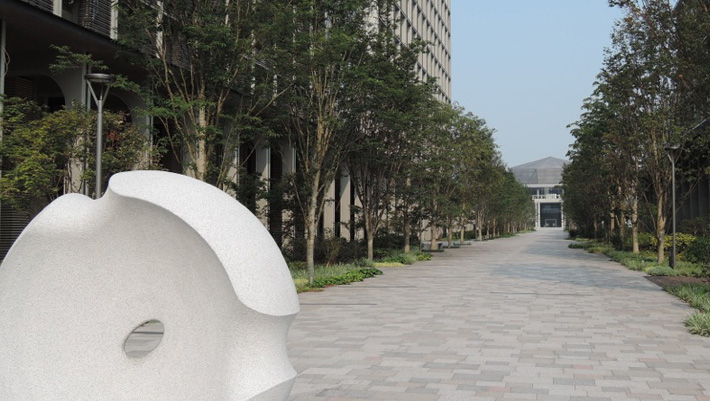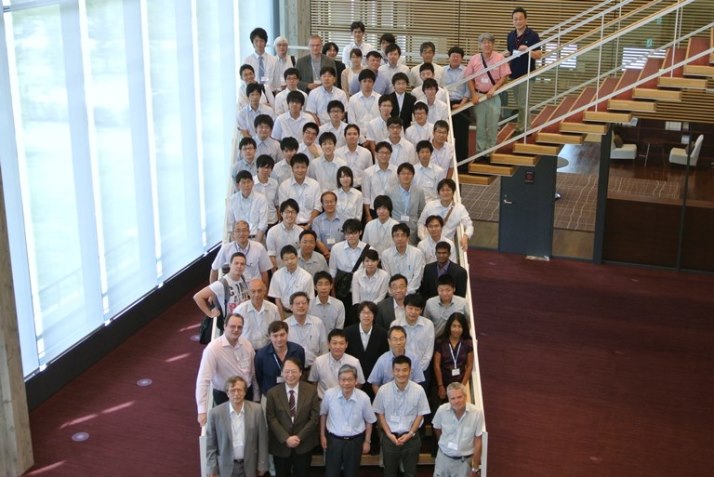International conference and summer school on advanced silicide technology 2014
DateJuly. 19 - 21, 2014
PlaceTokyo University of Science,Katsushika Campus, Tokyo, Japan
Organized by : The Professional Group on Semiconducting Silicides and Related Materials Division of the Japan Society of Applied Physics
In cooporation with : The Institute of Electrical Engineering of Japan, The Japan Institute of Metals, The Physical Society of Japan, The Thermoelectrics Society of Japan, The Vacuum Society of Japan
- Jul. 1, 2015
- JJAP special issue (Semiconducting Silicides Green Technology) published all papers at the following site: http://iopscience.iop.org/1347-4065/54/7S2.
- Jul. 1, 2015
- JJAP Conf. Proc. has already completed the publication of papers at the following site: https://journals.jsap.jp/jjapproceedings/conferences/vol-3.
- Aug. 29, 2014
- The submission deadline of JJAP Special Issue was extended to Sep. 30, 2014.
- Jun. 14, 2014
- The program is uploaded. And the instructions and submission procedures of proceedings manuscripts are uploaded.
- Nov. 29, 2013
- ICSS-Silicide2014 website open!
- Apri. 21, 2014
- ⇒ Abstract deadline
- Jun. 24, 2014
- ⇒ Registration deadline
- Jul. 21, 2014
- ⇒ Paper submission
- Jul. 19-21, 2014
- ⇒ Conference
The organizing committee welcomes researchers and students with interests in the science and technology of semiconducting silicides and related materials to the International conference and summer school on advanced silicide technology (ICSS-Silicide2014). Since 1997, Professional Group on Semiconducting Silicides and Related Materials of the Japan Society of Applied Physics (JSAP) has held the annual school on semiconducting silicides and related materials every summer for Japanese students and young scientists.
The ICSS-Silicide 2014 is organized by three parts, seminars on basic and advanced silicides by distinguished scientists and researchers, symposium of contributed papers and practice classes on thermoelectronics (tentative). This coming international summer school will be held to commemorate 16th summer school with the support of JSAP. In the ICSS-Silicide 2014, some distinguished scientists will give lectures on the technical areas such as growth, electrical properties, optical properties, devices, thermoelectrics, and theory, from the basics to the latest findings. Further recent advanced technology adapted to thermoelectric devices, solar cells and the fundamental physics of the silicides will be presented in both oral and poster sessions.
The scope of ICSS-Silicide 2014 is strongly related to those of previous international conference on Green Technology with Silicides and Related Materials (APAC-SILICIDE 2013) in Tsukuba. The proceedings were published in Thin Solid Films, 519 (2011), Physics Procedia, 11 (2011), and Physica Status Solidi (c) to be published. This professional school and conference are good opportunity to study and discuss the advanced silicide technology. We, organizing committee, express large participant to the ICSS-Silicide 2014.
This conference will cover the following technical areas:
1. Silicide green technology: Energy conversion devices, thermoelectrics, solar cells, ecologically friendly processes.
2. Electronic and photonic applications: optoelectronics, photonics, photonic crystals, spintronics, etc.
3. Crystal growth, thin films, bulk crystals, epitaxial growth
4. Structural analyses and observations
5. Surface sciences and technology
6. Optical, electrical, electronic and magnetic properties
7. Theory, calculations and simulations
Plenary lecture :
Prof. Lih-Juann Chen (National Tsing Hua University, Hsinchu, Taiwan)
Prof. G. Isachenko and Prof. M. I. Fedorov (Ioffe Physical-Technical Institute of the Russian Academy of Sciences, St.Petersburg, Russia)
Invited lecture :
Prof. D. B. Migas (Belarusian State University of Informatics and Radioelectronics, Minsk, Belarus)
Prof. E. Arushanov (Moldova Academy of Sciences, Moldova)
Prof. K. Homewood (University of Surrey, Surrey, UK)
Prof. Y. Maeda (Kyushu Institute of Technology, Japan)
International Conference chair
Y. Terai (Kagoshima Univ.)
International Summer School chair
T. Iida (Sci. Univ. of Tokyo)
Treasure
T. Yamada (Tohoku Univ.)
T. Yoshitake (Kyushu Univ.)
Program committee
T. Suemasu (Univ. Tsukuba)
K. Toko (Univ. Tsukuba)
H. Funashima (Osaka Univ.)
H. Tatsuoka (Shizuoka Univ.)
Y. Yoshitake (Kyushu Univ.)
K. Takarabe (Okayama Univ. Sci.)
M. Suzuki (Kyoto Univ.)
K. Hamaya (Kyushu Univ.)
Y. Imai (AIST)
M. Imai (NIMS)
M. Itakura (Kyushu Univ.)
S. Kondo (Nagasaki Univ.)
S. Nakamura (Tsuyama Nat. College Tech.)
H. Sugawara (Tokyo Metropolitan Univ.)
M. Tanaka (NIMS)
M. Uchikoshi (Tohoku Univ.)
H. Udono (Ibaraki Univ.)
Y. Ono (Toyama Univ)
T. Nagano (Ibaraki Univ.)
K. Hammura (Hitachi Cambridge Laboratory)
K. Ohashi (Hitachi. Ltd.),
H. Funakubo (Tokyo Tech.),
Y. Mori (Okayama Univ. Sci.)
A. Nakayama (Sumitomo Electric)
S. Sakai (Japan Atomic Energy Agency)
Y. Ando (Osaka Univ.)
Y. Hayakawa (Shizuoka Univ.)
Steering Committee (Tentative)
T. Iida (Sci. Univ. of Tokyo)
H. Udono (Ibaraki Univ.)
Y. Hara (Ibaraki Nat. College Tech.)
K. Yamaguchi (Japan Atomic Energy Agency (JAEA))
T. Yamada (Tohoku Univ.)
H. Sugawara (Tokyo Metropolitan Univ.)
H. Katsumata (Meiji Univ.)
K. Akiyama (Kanagawa Indust. Tech. Center)
Publishing Committee (Tentative)
Y. Maeda (Kyushu Inst. Tech.)
T. Asano (Kyushu Univ.)
Y. Terai (Kagoshima Univ.)
T. Suemasu (Univ. Tsukuba)
T. Sadoh (Kyushu Univ.)
M. Imai (NIMS)
M. Suzuki (Kyoto Univ.)
Y. Nakamura (Osaka Univ.)
International Advisory Committee (tentative)
S. Uekusa (Meiji Univ., Tokyo, Japan)
M. Miyao (Kyushu Univ., Fukuoka, Japan)
M. Ichikawa (Univ. of Tokyo, Tokyo, Japan )
M. Isshiki (Emeritus, Tohoku Univ., Sendai, Japan)
E. Arushanov (Academy of Science, Moldova)
V. E. Borisenko (Belarusian State Univ. of Informatics and Radioelectronics, Minsk, Belarus)
K. Homewood (Univ. of Surrey, Surry, UK)
N. G. Galkin (Academy of Science, Vladivostok, Russia)
L.-J. Chen (National Tsing Hua Univ., Hsinchu,Taiwan)
G. Shao (University of Bolton, Bolton, UK)
J. Song (University of Wisconsin-Madison, Madison, USA)
Y. Gao (Hubei University, Wuhan, China)
Program committee will provide two mode presentations (oral and poster)
after reviewing the submitted abstracts. Some distinguished presentations
by invited speakers will be planed.
■Oral Presentations![]()
For oral presentations a PC video projector will be available. For computer
presentation, please prepare your file in MS-PowerPoint (ppt recommended,
rather than pptx) or PDF file format, saved in CD-ROM or USB-stick. It
is strongly recommended to use your own PC having a VGA connector. If not,
you should transfer your presentation file to our host computer in advance
of your presentation.
■Poster Presentations![]()
Dimensions of poster boards: W 950 mm x H 1800 mm.
The presenters of Poster session I are recommended to set up their posters
before the Opening or during Break (14:50-15:10) on July 19.
The presenters of Poster session II are recommended to set up the posters
at 8:00-8:30 or before the session II on July 20.
The length of abstract is within two pages (1-page abstracts are also acceptable
).
The first page must include the title of the paper, author(s), affiliation(s),
address, telephone number, fax number, e-mail address, and article text.
Two-byte characters such as Japanese, Chinese, Korean, etc. fonts cannot
be used. The paper should report original, previously unpublished work,
including specific results.
You can download the abstract format (here) and Abstract Submission Form (here).
Abstract PDF file together with Abstract Submission Form should be sent
by email to ecology@bk.tsukuba.ac.jp.
Hard deadline is April 21, 2014.
Let us know your preference regarding the presentation style (oral or poster)
and the type of conference paper (JJAP Special Issue or JJAP Conference
Proceedings) in the Abstract Submission Form.
But please note that this is just for program commitees' reference.
Review results are scheduled to be notified by e-mail in the beginning
of May.
For any inquires concerning abstract submissions, please contact the
ICSS program committee chair : Prof. T. Suemasu (suemasu@bk.tsukuba.ac.jp).
Young Scientist Award was awarded to the following Young Scientist. Congratulations
!!
Nobuhiko Hori
Ibaraki University, Japan
"Evaluation of Mg2Si pn-junction depth by sputter etching"
By N. Hori, S. Hasunuma, F. Esaka and H. Udono
Hiroaki Tsukamoto
Kagoshima University, Japan
"Investigation of surface Fermi level in ß-FeSi2 epitaxial films by Franz-Keldysh oscillations"
By H. Tsukamoto, H. Yamaguchi, T. Hattori, T. Higashi and Y. Terai
Masakazu Baba
University of Tsukuba, Japan
"Crystal growth of undoped and impurity doped BaSi2 films on poly-crystalline Si"
By M. Baba, K. O. Hara, D. Tsukahara, K. Toko, N. Usami and T. Suemasu
Alexander Shevlyagin
Institute of Automation and Control Processes FEB RAS, Russia
"Characterization of the silicon/ß-FeSi2 nanocrystallites heterostructures in the NIR photodetection at low temperature"
By A. Shevlyagin, D. Goroshko, E. Chusovitin, K. Galkin and N. Galkin
(During the conference, one or more Young Scientist Award(s) will be presented.
The candidate should not be older than 35 at the time of the conference.)
Conference proceeding papers will be published in JJAP Conference Proceedings
(http://jjap.jsap.jp/special/JJAPConfProc.html). Separately, review papers by the lectures of summer school and some
selected papers will be published in a special issue of Japanese Journal
of Applied Physics (JJAP)(http://jjap.jsap.jp/special/ESubmissionSIssue.html). The manuscript must be original.
Please note that the instruction and submission procedure of manuscripts differ between
JJAP Conference Proceedings and JJAP special issue since their publication procedures are completely separately made.
<JJAP Conference Proceedings template>
A manuscript should be prepared using the following template since the
manuscript submitted in pdf is published as it is.
http://jjapproceedings.jsap.jp/authors/JJAPCP_template.docx
<JJAP special issue template>
The publication procedure is made similarly to the regular publication
of JJAP. Although the following template is not necessarily used, it is
convenient for the preparation of manuscripts in JJAP regular paper format.
http://jjap.jsap.jp/template/template-RP.docx
Paper submission ![]()
Both JJAP Special Issue and JJAP Conference Proceedings (online-only and
fully open access journal, http://jjapproceedings.jsap.jp/ ) of ICSS-SILICIDE 2014 will be published. Authors should pay attention
to the following items.
(a) Contributed papers to JJAP Conference Proceedings
General contributed papers of ICSS-SILICIDE 2014 should be submitted from
the JJAP conference proceedings web site on IOP Science by July 21 extended to July 31.
(b) Review articles, Invited or Selected Papers to JJAP Special Issue
The authors of plenary, invited lectures and speakers or authors selected
by program committee should submit their review articles (RV) or regular
papers (RP) to the JJAP Special Issue from the JJAP web site on IOP Science.
The articles should be submitted by Aug 31 extended to Sep. 30.
(c) The submission site for ICSS-SILICIDE 2014 will be opened not later
than the end of May. See, (http://jjap.jsap.jp/special/ESubmissionSIssue.html)
(d) The program number (PN) at the conference will be required before enter
the submission site. The PN will be informed by program committee not later
than the end of May.
(e) Submission: IOP Science site, visit (http://iopscience.iop.org/1347-4065/),
and go to [submission article] in journal link column.
(f) ATTENSION: when authors submit their articles from JJAP general online
submission, that is a different site, their articles cannot be forwarded
to our review process both for the JJAP special issue and the conference
proceedings.
(g) Publication charge
Publication charge of all articles to be published in JJAP Conference Proceedings
will be absorbed by Conference Organizer. Except for Review articles of plenary and invited lectures, all articles
to be published in JJAP Special Issue will be charged by 10,000 JPY/printed
page. Details, see the following site (http://jjap.jsap.jp/authors/index.html)
(h) We, publishing committee, strongly recommend the authors to visit the
site (http://jjap.jsap.jp/authors/index.html) and go to "How to write a research paper" before preparing papers.
If any question, please contact Professor Y. Maeda (Kyutech), Chair of
Publishing Committee of ICSS-SILICIDE 2014.
Participant fee includes a conference material (not include Banquet fee).
| Regular Participant | 35,000 Yen |
| Students | 10,000 Yen |
Conference banquet: (in the evening of July 20 at Tokyo university of science)
| Regular Participant | 6,000 Yen |
| Students | 4,000 Yen |
Registration form : Registration form_ICSS silicide2014.doc.
Please type and check the all blanks in the form using MS-word.
Japanease participants
Please send this form (MS-word file) to icss2014@res.tagen.tohoku.ac.jp after your bank transfer.
Not Japanease participants
The registration form should be sent to +81-99-285-8389 (Y. TERAI) by facsimile.
Registration should be done before June 30, 2014.
(Please do not include the participant fee of the practice class program
in the registration payment.)
No refund can be made for cancellations received after July 4, 2014.
In ICSS-Silicide 2014, optional practice classes are planned for student
and corporate researcher on the afternoon of 21, July. The participants are required registration of the conference and to pay
additional participation fees for the classes. Since there is a limit to the number of participants, the participants
will be determined by the selection of organized committee. If you wish to participate in the practice class, please contact to Prof.
Yamada (yamataka@tagen.tohoku.ac.jp) by e-mail with your name, affiliation,
and the course you want to participate. After the selection, we will announce you the result.
The deadline of application for the practice class is June 6, 2014.
Additional participation fees for the classes
Student : 1,000 JPY
Corporate researcher : 10,000 JPY
Course 1 : Mg2Si thermoelectric power generation chip : fabrication and measurement
>Practice content:
- Polycrystalline Mg2Si source handling and pulverization
- Compaction using plasma activated sintering method
- Cutting sintered pellet using wire saw
- Seebeck coefficient and electrical conductivity measurements of Mg2Si thermoelectric chip as a function of temperature up to 600°C
- Thermopower calculation
(Duration : Approximately five hours, Capacity : 24 persons)
|
|
Course 2 : First principle calculation (All electron band structure calculation package)
Practice content:
- Crystal structure of Mg2Si
- Full-potential linearized augmented-plane-wave (FLAPW) calculation
- Local density approximation
- Modeling
- Initial file preparation for ABCAP calculation
- Band structure calculation
- Seebeck coefficient calculation
(Duration : Approximately four hours, Capacity : 10 persons)
|
|
ICSS-Silicide2014 is held at the Tokyo University of Science (TUS), Katsushika Campus. Tokyo University of Science opened its new Katsushika Campus in April 2013. The new campus houses educational and research activities for departmental groups with a focus on interdisciplinary research and community collaboration.The Tokyo Butsurigaku Koshujo (Tokyo Academy of Physics), the forerunner of the Tokyo University of Science, was founded in 1881. The Tokyo University of Science will celebrated its 130th anniversary in 2011. Since the time of its foundation, science and technology have undergone changes beyond any imagination. In the 21st century, global issues, such as the environment, associated with both energy resources and climate change, require progress of science and technology in harmony with nature, which is the University's founding principle.
Tokyo University of Science, Katsushika Campus
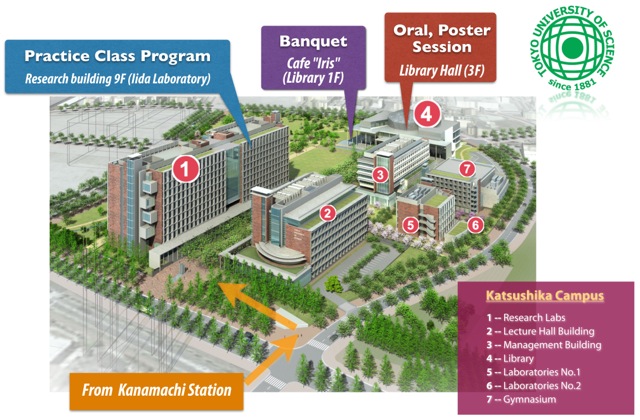
Address : 6-3-1 Niijuku, Katsushika-ku, Tokyo 125-8585
Located an eight minutes' walk from Kanamachi Station, accessible via the JR Joban Line (local service),which goes through to the Tokyo Metro Chiyoda Line and Keisei Kanamachi Line.

From Narita Airport
Take the Keisei Honsen/main Line to Keisei-Takasago Station. Transfer to the Keisei Kanamachi Line and take it to Keisei-Kanamachi Station. Travel time: about 89 minutes.
From Haneda Airport
Take the Tokyo Monorail to Hamamatsucho Station. Transfer to the JR Yamanote
Line and take it to Nishi-Nippori station. Transfer to the Tokyo Metro
Chiyoda Line and take it to Kanamachi Station. Travel time: about 74 minutes.
Take the Keikyu Line to Sengakuji Station. Transfer to the Toei Asakusa
Line and take it to Keisei-Takasago Station (via Oshiage Station). Transfer
to the Keisei Kanamachi Line and take it to Keisei-Kanamachi Station. Travel
time: about 80 minutes.
From Tokyo Station
Take the JR Yamanote Line to Nishi-Nippori Station. Transfer to the Tokyo Metro Chiyoda Line and take it to Kanamachi Station. Travel time: about 33 minutes.
From Ueno Station
Take the JR Joban Line (rapid service) to Kita-Senju Station.
Transfer to the JR Joban Line (local service) and take it to Kanamachi
Station. Travel time: about 30 minutes.
From Shinjuku Station
Take the JR Yamanote Line to Nishi-Nippori Station. Transfer to the Tokyo Metro Chiyoda Line and take it to Kanamachi Station. Travel time: about 40 minutes.
From Chiba Station
Take the JR Sobu Line (local service) to Nishi-Funabashi Station. Transfer
to the JR Musashino Line and take it to Shin-Matsudo Station. Transfer
to the Joban Line (local service) and take it to Kanamachi Station. Travel
time: about 70 minutes.
Take the JR Sobu Line (rapid service) to Tsudanuma Station. Transfer to
the Shin-Keisei Line and take it to Matsudo Station. Transfer to the JR
Joban Line (local service) and take it to Kanamachi Station. Travel time:
about 80 minutes.
From Yokohama Station
Take the JR Tokaido Line to Tokyo Station. Transfer to the JR Yamanote
Line and take it to Nishi-Nippori Station. Transfer to the Tokyo Metro
Chiyoda Line and take it to Kanamachi Station. Travel time: about 65 minutes.
Take the Keikyu Line to Sengakuji Station. Transfer to the Toei Asakusa
Line and take it to Keisei-Takasago Station (via Oshiage Station). Transfer
to the Keisei Kanamachi Line and take it to Keisei-Kanamachi Station. Travel
time: about 70 minutes.
A visa is required for citizens of countries that do not have visa-exempt agreements with Japan. Please contact the nearest Japanese Embassy or Consulate for visa requirements. For documents necessary for visa application, please contact Prof. H. Tatsuoka (tehtats@ipc.shizuoka.ac.jp) of steering committee member.
You can timely get necessary information about this conference from the official site (http://annex.jsap.or.jp/silicides/icss-silicide2014) or by e-mail to the organizing committee office, terai@eee.kagoshima-u.ac.jp (Prof. Y. Terai).

